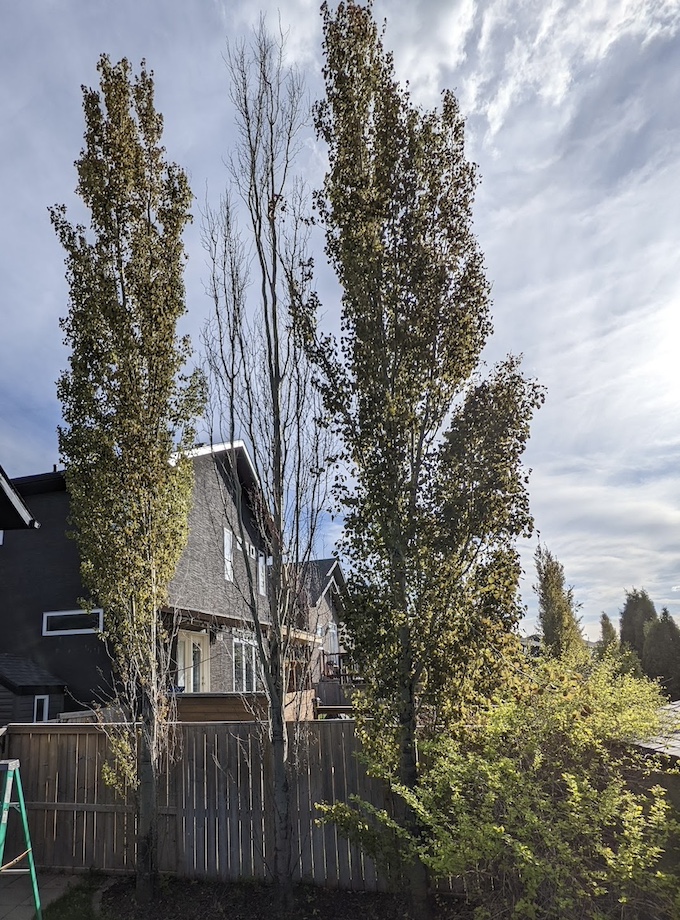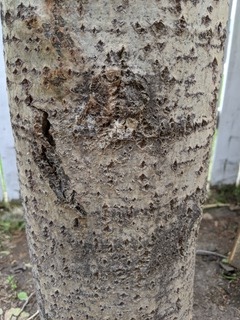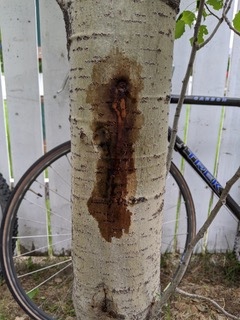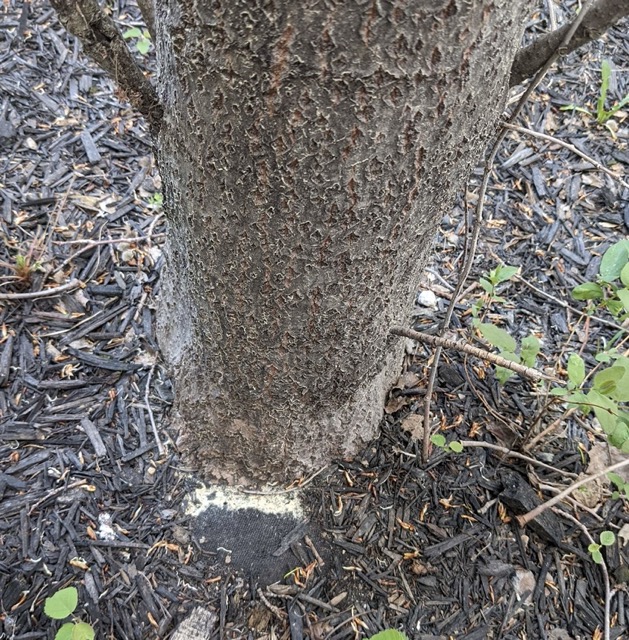
Poplar borer
Damaging
Poplar Borer (Saperda calcarata) is a species of long-horned beetle native to Canada and the US which bores into aspen and poplars.
The adult female insect bores holes in the bark of aspen and poplars into which it lays an egg. The egg hatches and the larva tunnels and feeds on the tissue underneath the bark. This delicate tissue is how water and nutrients move through the plant. Once it is damaged, it cannot be repaired and the tree starts to decline and die, starting with the upper branches and eventually the entire tree.
Stressed trees are more prone to severe problems with poplar borer. This is especially true in drought conditions when trees have become drought-stressed.
Symptoms

Small ¼” round holes in the bark
Bark that is rippled, swollen or loose
Staining of the bark from the holes or the crooks of branches

Sometimes there is sawdust at the base of the tree

The presence of woodpeckers is often an indication of larvae under the bark
Natural predators of poplar borer
Wood peckers, parasitoid (ichneumon) wasps and nematodes.
What to do
Heavily infested trees are known as ‘nursery’ or ‘brood’ trees when there are high numbers of larvae under the bark. The insects mature and move easily to the tree next to and may eventually damage or kill the entire row of trees.
The best thing to do is to cut down and burn or bury the affected poplars to prevent spreading it to other poplars. Scout frequently for the symptoms in other trees and cut them down too.
Since the larvae are inside the tree, insecticides cannot reach them.
There is some evidence that injecting nematodes into the holes can give partial control – the type for this is the Steinernema species which is mixed with water and injected into the holes with a syringe. This may be useful if the infestation is in the early stages.
Swedish columnar aspen and tower poplar are popular tree selections, often grown in long rows: they grow quickly and provide screening from neighbours in a few short years. An infestation of poplar borer may quickly spread from tree to tree. If you are re-planting tree saplings in an affected row of poplar or aspen, consider using a different species of tree. Poplar borer only affect poplar and aspen.
Sources
Murray, Marion, and Ryan Davis. Poplar Borer Fact Sheet. Utah State University Extension and Utah Plant Pest Diagnostic Laboratory, Aug. 2023, https://digitalcommons.usu.edu/cgi/viewcontent.cgi?article=2360&context=extension_curall.
Government of Canada, Natural Resources Canada. Poplar Borer. 31 Dec. 2013, https://tidcf.nrcan.gc.ca/en/insects/factsheet/991.

